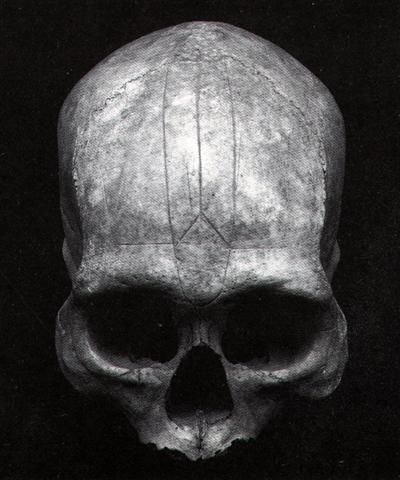However, we should try to fly across the night side like the kuhane of Hau Maka to the new Land - not for 182 days but for a distance which was related to the left side, to the female side. To the left of the vertical beam in the center among the 14 tresses of Pachamama there were 214 knots, making a total of 396:
There was a pair of complementary ways to measure the year, 'Two Halls of Truth': ... The horizon defines a circle against which the rising and setting of the sky 'persons' can be observed. They rise in the east and they go down in the west. To the fundamental difference between day and night is added 3 subdivisions of the day:
The life of Sun describes the path of life, he is born in the east and he 'falls on his face' in the west. In the 'geography of time', though, Sun is born in midwinter and dies in midsummer, where evidently the Red Queen is responsible for 'his head coming off' ... 104 = 4 * 26 = number of cards in a pair of decks:
... They tightly swathed the broken body in linen bandages, and when they performed over it the rites that thereafter were to be continued in Egypt in the ceremonial burial of kings, Isis fanned the corpse with her wings and Osiris revived, to become the ruler of the dead. He now sits majestically in the underworld, in the Hall of the Two Truths, assisted by forty-two assessors, one from each of the principal districts of Egypt; and there he judges the souls of the dead ... (The Masks of God: Primitive Mythology.)
The Sun year was measured as 2 * 182 = 364 = 14 * 26 days = 52 weeks (equal to the number of cards in a single deck of cards). 2 * 214 = 428 = 4 * 107 days. The drawing in Gb7-18 could indeed visualize the regeneration (ure) of a new cycle: ... Up to the present time, fertility spells for fowls have played an important role. Especially effective were the so-called 'chicken skulls' (puoko moa) - that is, the skulls of dead chiefs, often marked by incisions, that were considered a source of mana. Their task is explained as follows: 'The skulls of the chiefs are for the chicken, so that thousands may be born' (te puoko ariki mo te moa, mo topa o te piere) ... As long as the source of mana is kept in the house, the hens are impregnated (he rei te moa i te uha), they lay eggs (he ne'ine'i te uha i te mamari), and the chicks are hatched (he topa te maanga). After a period of time, the beneficial skull has to be removed, because otherwise the hens become exhausted from laying eggs ...
If so, there ought to be an overlap between the Old One and the beginning of the new cycle. In my table above I have the stars and dates as extrapolated backwards from the beginning of side a - once upon a time the beginning of a new cycle. ... The Maya New Year started with 1 Pop, the next day being 2 Pop, etc. The final day of the month, however, carried not the coefficient 20, but a sign indicating the 'seating' of the month to follow, in line with the Maya philosophy that the influence of any particular span of time is felt before it actually begins and persists somewhat beyond its apparent termination ... (The Maya) The corresponding stars and dates according to the old cycle:
... A man had a daughter who possessed a wonderful bow and arrow, with which she was able to bring down everything she wanted. But she was lazy and was constantly sleeping. At this her father was angry and said: 'Do not be always sleeping, but take thy bow and shoot at the navel of the ocean, so that we may get fire.' The navel of the ocean was a vast whirlpool in which sticks for making fire by friction were drifting about. At that time men were still without fire. Now the maiden seized her bow, shot into the navel of the ocean, and the material for fire-rubbing sprang ashore. Then the old man was glad. He kindled a large fire, and as he wanted to keep it to himself, he built a house with a door which snapped up and down like jaws and killed everybody that wanted to get in. But the people knew that he was in possession of fire, and the stag determined to steal it for them. He took resinous wood, split it and stuck the splinters in his hair. Then he lashed two boats together, covered them with planks, danced and sang on them, and so he came to the old man's house. He sang: 'O, I go and will fetch the fire.' The old man's daughter heard him singing, and said to her father: 'O, let the stranger come into the house; he sings and dances so beautifully.' The stag landed and drew near the door, singing and dancing, and at the same time sprang to the door and made as if he wanted to enter the house. Then the door snapped to, without however touching him. But while it was again opening, he sprang quickly into the house. Here he seated himself at the fire, as if he wanted to dry himself, and continued singing. At the same time he let his head bend forward over the fire, so that he became quite sooty, and at last the splinters in his hair took fire. Then he sprang out, ran off and brought the fire to the people ... (From the Catlo'Itq in British Columbia according to Hamlet's Mill.)
|
||||||||||||||||||||||||||||||||||||||||||||||||||||||||||||||||||||||||||||||||||||||||||||||||||||||||||||||||||||||||||||||||||||||||||||||||||||||||||||||||||||||||||||||||||||||||||||||||||||||||||||||||||||||||||||||||||||||||||||||||||||||||||||||||||||||||||||||||||||||||||||||||||||||||||||||||||||||||||||

.jpg)











